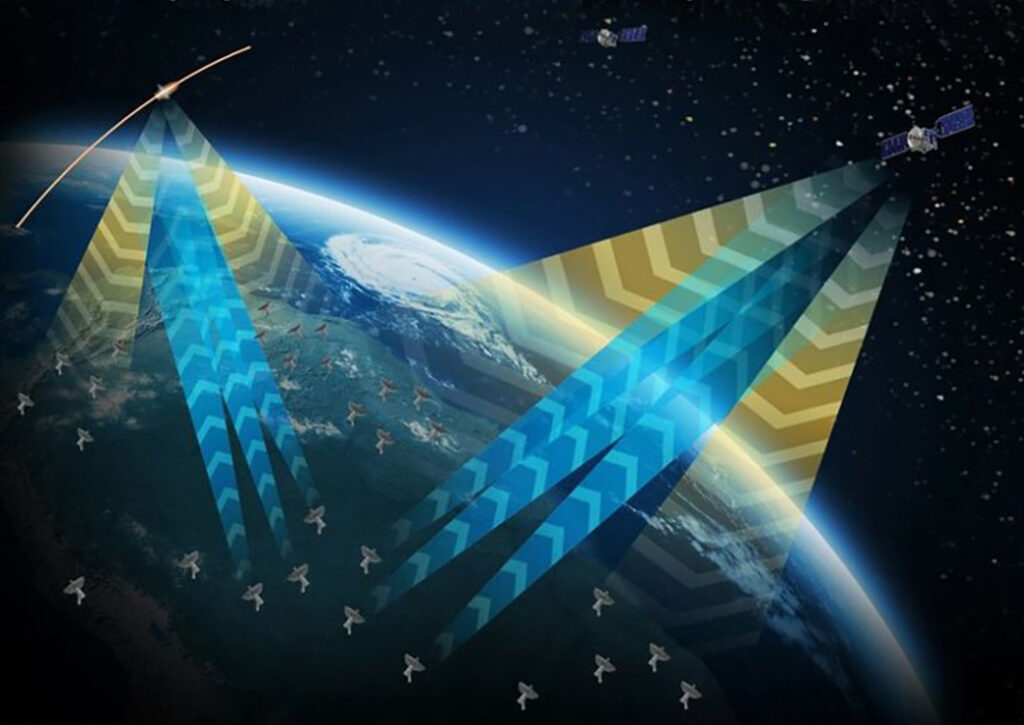THE WATCH STAFF
The U.S. Space Force Space Systems Command (SSC) has awarded the defense contractor Northrop Grumman U.S. $341 million to develop a Deep-Space Advanced Radar Capability (DARC) in support of its mission to provide space-domain awareness.
Northrop Grumman said DARC, pictured, will field more resilient ground-based radar that enhances space-domain awareness for geostationary orbit, according to a February 23, 2022, news release.
“While current ground-based systems operate at night and can be impacted by weather conditions, DARC will provide an all-weather, 24-7 capability to monitor the … geosynchronous orbital environment,” according to the news release.
The initial contract includes the design, development and delivery of a DARC system to the Indo-Pacific region by 2025. Two future systems will be “strategically placed around the world,” with the goal of providing global coverage, according to the news release.
Space-domain awareness is a relatively new discipline for the U.S. military that supplanted the long-established practice of space situational awareness. U.S. Army Gen. James H. Dickinson, commander of the joint-service U.S. Space Command (USSPACECOM), described the differences between the two concepts during a speech at the Air, Space & Cyber Conference on September 21, 2021. (Space Force, the newest branch of the U.S. Armed Forces, was established in 2019 as was USSPACECOM, which is one of the Department of Defense’s 11 combatant commands.)
Simply put, Dickinson said, space situational awareness is “reporting on where something is in space,” according to a February 23, 2022, story in Air Force Magazine. In contrast, space-domain awareness requires observers to understand the intent behind having something in space as well as its location, Dickinson said.
DARC is not the only system for improving space domain awareness. Other new projects include ground-based radars to surveil high Earth orbits and data from a CubeSat headed on a unique route around the moon, according to Air Force Magazine.
In January, the Space Force added two satellites to its Geosynchronous Space Situational Awareness Program to surveil the high satellite belt, bringing the constellation to a total of six, according to Air Force Magazine. The program’s satellites are also meant to help better understand the “ever evolving state of affairs” in the geosynchronous equatorial orbit belt, according to a statement by the Space Force, the magazine reported.
The Space Force intends to expand its domain awareness to cislunar space — the area around the Earth extending to just beyond the moon’s orbit — to monitor lunar activities, the magazine reported.
The number of satellites in orbit has accelerated in the past few years: From January 1 to May 1, 2021, 836 satellites were launched into orbit, increasing the number of active satellites to more than 4,000 for the first time, according to a July 27, 2021, report by the Union of Concerned Scientists.
“Many Americans still don’t quite grasp how important our assets in space really are and don’t understand how their daily lives are tied to assets in space,” Dickinson said, according to a July 27, 2021, story in the Department of Defense News. “Space-based capabilities enable virtually every element of our national power, including diplomacy, economics, finance and information.”
IMAGE CREDIT: NORTHROP GRUMMAN

